Swans making an epic comeback in Ohio
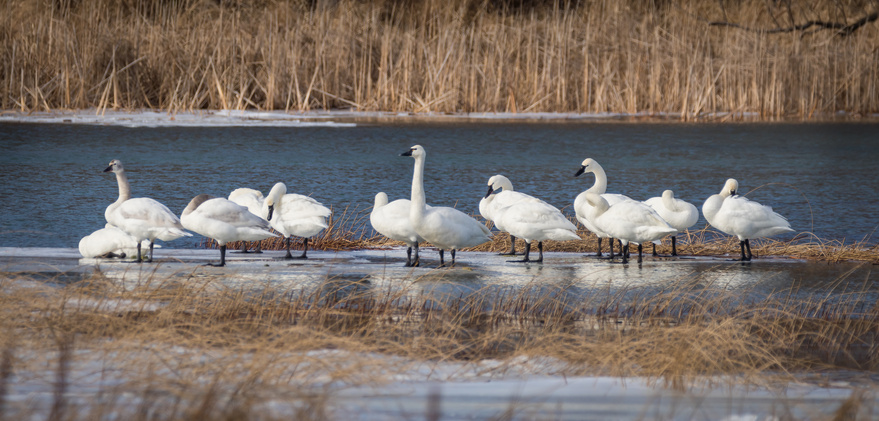
A Swan Story
Trumpeter swans were once abundant throughout North America numbering over 100,000 birds. By the early 1900s, there were only about 70 birds left in the contiguous United States and a small population in Alaska. This drastic decline was due to overhunting and habitat loss. Once trumpeter swans were protected, programs across North America were created to help restore populations. Many states in the Midwest including Ohio jumped on board to bring back trumpeter swans to their state. Due to these collective efforts, including help from over 25 zoos, there are now an estimated 60,000 trumpeter swans in North America.
Cleveland Metroparks Zoo, in partnership with other organizations, was an integral part of the Ohio restoration program. Staff helped collect eggs from Alaska, hatched and raised the cygnets at the Zoo, and successfully released just over 100 trumpeter swans into different marsh areas throughout Ohio. In addition, an extensive, multi-faceted and interactive (award-winning) Zoo education program was created and implemented to accompany the project. The Zoo has also participated in Iowa’s trumpeter swan restoration program by sending cygnets that were hatched at the Zoo for release in Iowa.
Now that the Midwest states have reached sustainable trumpeter swan numbers, Zoos are assisting with the Oregon restoration program where the population still needs help. Zoos participating in these programs not only provide cygnets for release, they also provide funding and resources to expand conservation outreach.
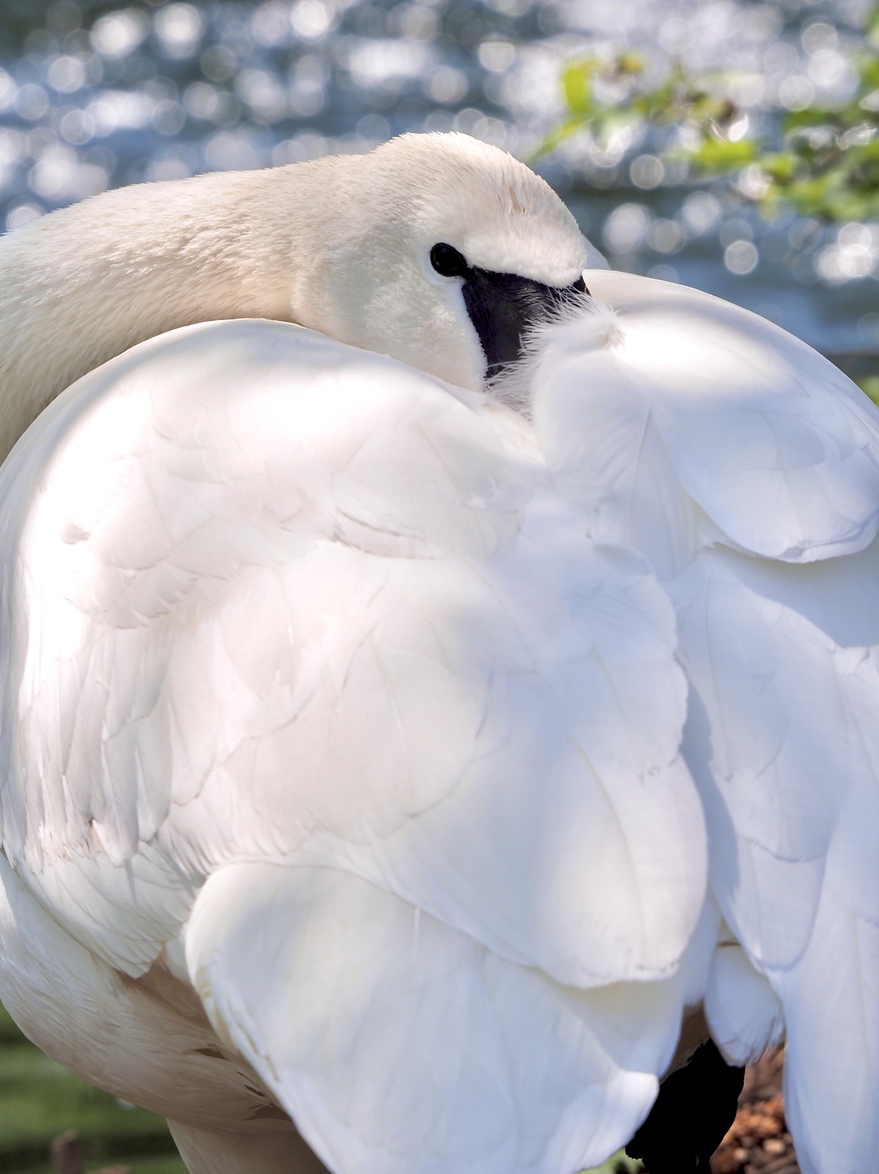
SSP in CLE
Animal Keeper Tiffany Mayo, who is the lead keeper in the Sarah Allison Steffee Center for Zoological Medicine, is also the SSP (Species Survival Plan) Coordinator for Trumpeter Swans. Her main role with the SSP is to manage and maintain a sustainable, genetically diverse swan population within AZA Zoos. Tiffany said she also "supports, facilitates and promotes trumpeter swan and wetland conservation initiatives through restoration efforts, fundraisers, media, field work and creating educational resources."
"The big project that I am working on right now is creating two educational coloring and activity books that focus on trumpeter swan and wetland conservation. The books are a collaboration between The Trumpeter Swan Society and zoos, with the target audience being children between the ages of 5-11. [The coloring books] will have the flexibility to meet the needs of parents, teachers, and educators at zoos, nature centers and other conservation-minded facilities. The books are designed to be interactive and engage children with activities, coloring and QR codes that lead to videos and additional information. The plan is to complete both books by the end of this year and make them available free to download on The Trumpeter Swan Society website along with distributing them to interested organizations."
Our Swans
Cleveland Metroparks Zoo has two pairs of swans. Duke and Sylvia are the older pair that live next to Wade Hall on the lake. Duke is 7 and Sylvia is 15 years old. Louie and Lottie are the younger pair on the lake across from the Andean Condors. Louie is 3 and Lottie is 1.5 years old.
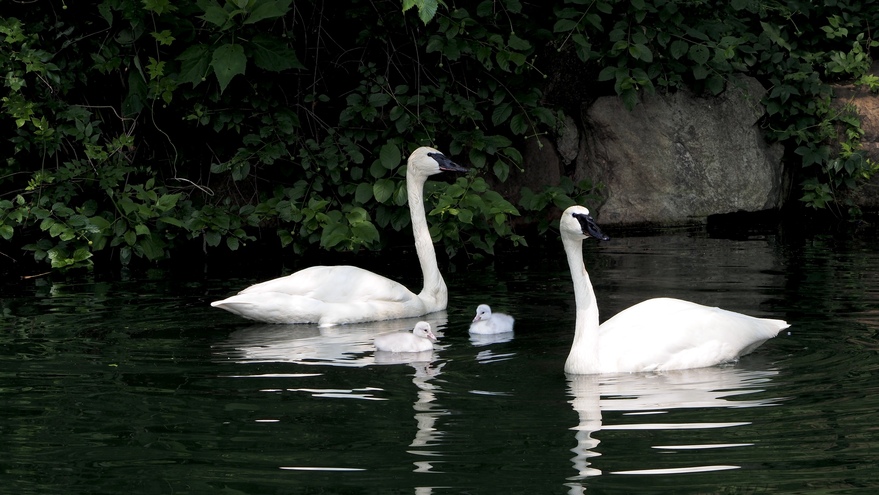
After this article was originally published in Z Magazine, Duke and Sylvia had two cygnets hatch! Once they're old enough, the cygnets will be released into the wild in Oregon.
“Trumpeter swans are usually not reproductively mature until around 4 years of age, so Duke and Sylvia are the pair to look out for in the egg-laying department,” says Mayo. "We are hoping they nest and lay eggs this year."
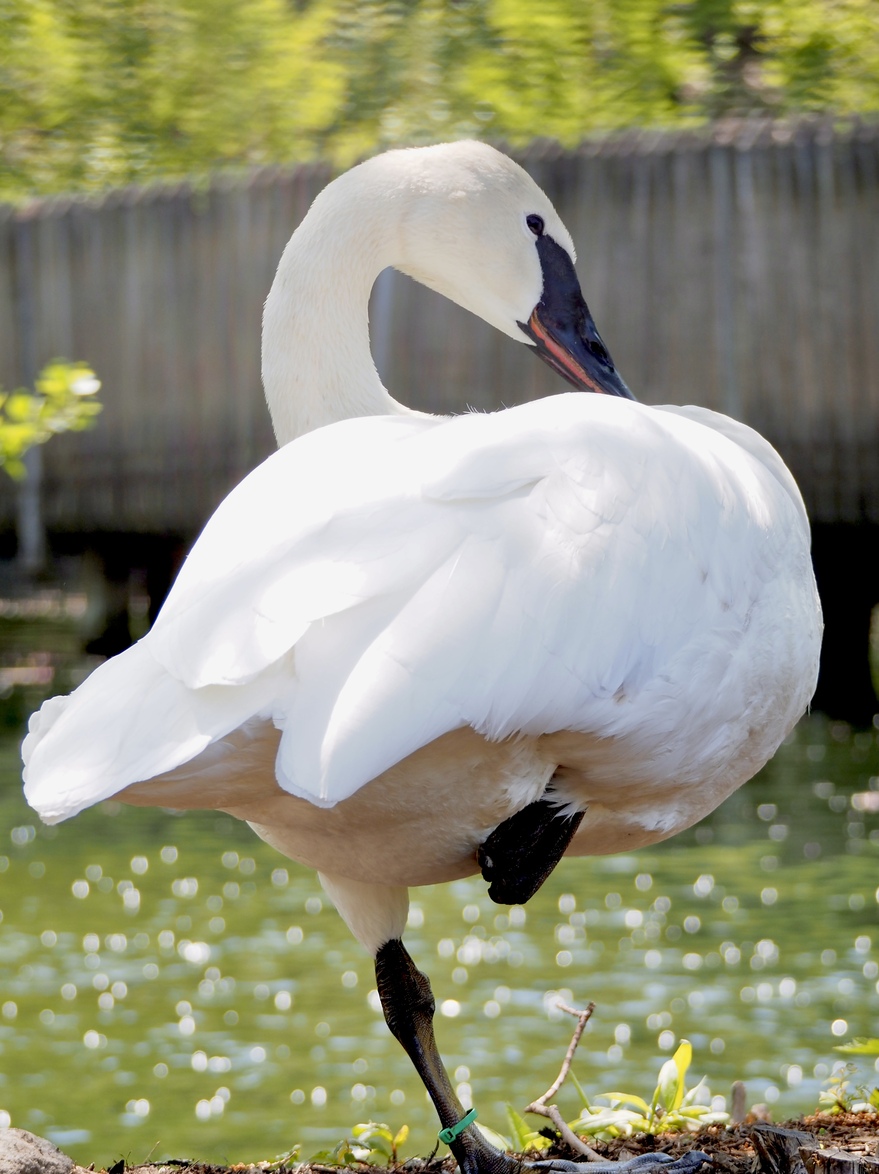
Trumpeter swans nest in April/May and hatch cygnets in June/July. Their nests can be up to 6 feet in diameter and are made of grasses, sticks, and leaves.
In the wild, adult trumpeter swans mainly eat underwater vegetation where they use their long necks to pull the plants from the bottom of shallow wetlands. At the Zoo, trumpeter swans eat a floating waterfowl pellet along with different kinds of greens. They also find and forage on naturally occurring plants in the Waterfowl Lake area.
Trumpeter swans are native to North America and can handle most winter temps if their water is not frozen. The Zoo places special bubblers on the lake to prevent their water from freezing so you can see them outside all year round.
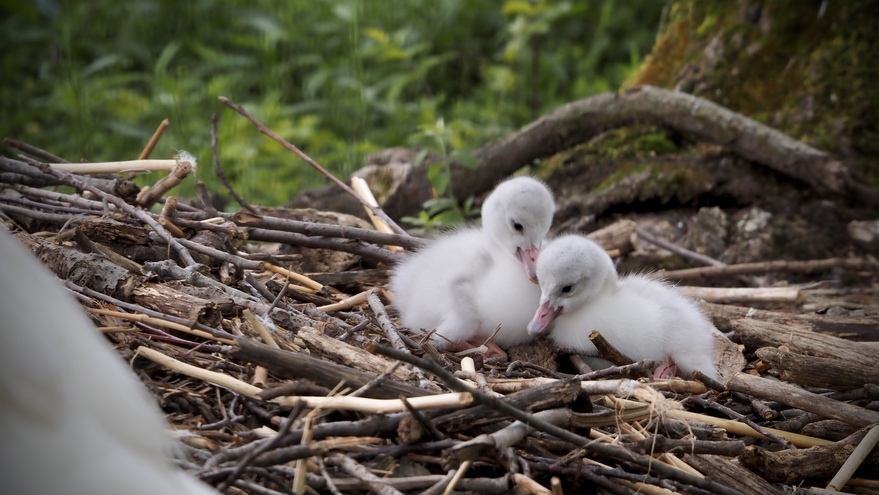
The Zoo's newest cygnets hatched on June 25 and June 26, 2023.
Tiffany says, "Swans are amazing to work with! They are known as symbols of healthy wetlands and their conservation success story is something we can share with guests." They are the largest waterfowl in North America and can weigh up to 30 lbs, making them an eye-catching species to have at the Zoo.
"Each swan has their own unique personality and they can live into their 30s. Swans generally are thought of as aggressive, but this is usually only true when they are protecting their nest or young. Some of our swans have even been trained to have ointment put on the bottoms of their feet as a preventative measure to keep their feet healthy."
As a local species that can be found right here in Ohio, Tiffany enjoys teaching people about trumpeter swans and how they can protect their habitat. At the Zoo's Party for the Planet event in April, she coordinated a craft table located right by the swans where kids could either color a light switch cover or make a swan hat. Kids were able to learn about trumpeter swans and remember to turn off their lights - so it was a win-win for all!
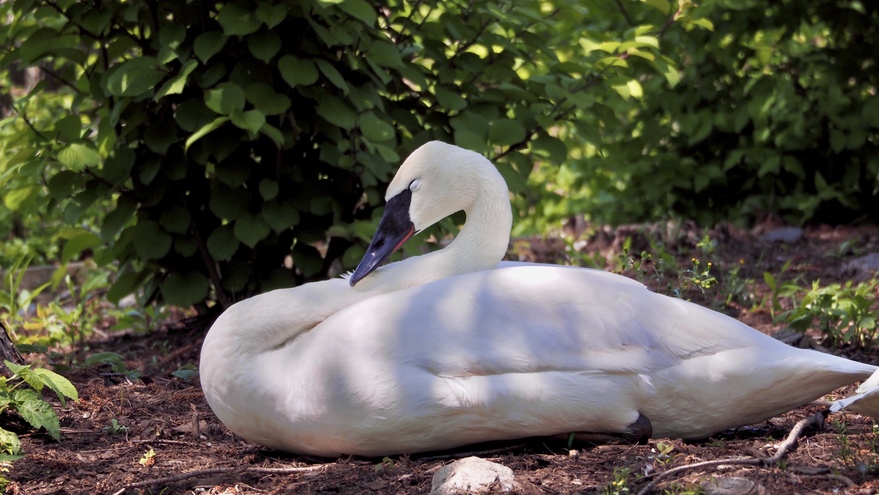
A Future for Trumpeter Swans
The outlook for swans in Ohio is extremely positive. In just 25 years the population has gone from zero to over 800 and is steadily increasing. In 2022 the Ohio restoration program came full circle when trumpeter swans were observed nesting and successfully raising young for the first time ever in Cleveland Metroparks. This success is due to citizens and organizations, including Cleveland Metroparks Zoo, coming together to bring this majestic species back to Ohio.
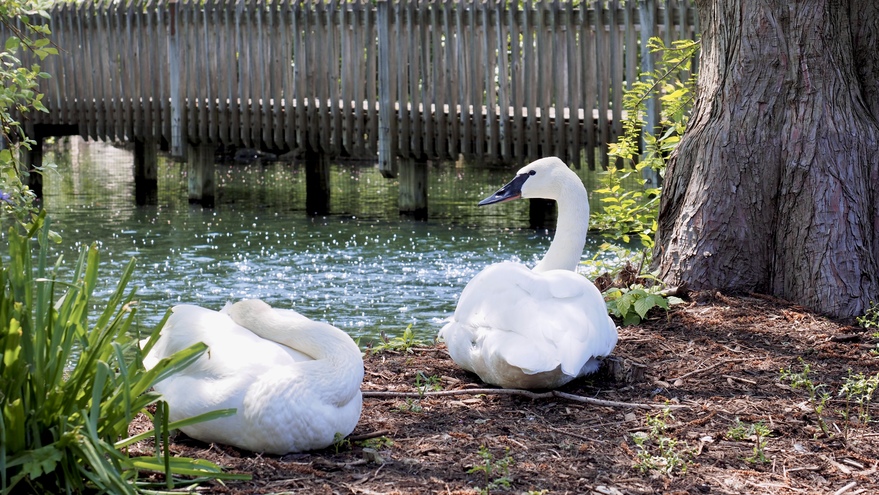
With populations doing well in the Midwest and Canada, biologists are trying to learn more about what is now called the “Interior Population” of trumpeter swans. A study to look at how swans are moving and what habitat they are using is being conducted where GSM/GPS collars were placed on swans that document their location every 15 minutes. As part of the study, 20 swans were collared in Ohio in 2020 and 2021. Cleveland Metroparks Zoo along with the Greater Cleveland Chapter of the American Association of Zoo Keepers (AAZK) supported the project by funding some of the collars, and staff members were able to go out in the field and help collar the swans with the Ohio Division of Wildlife.
Even though trumpeter swans are doing well in Ohio and other parts of North America, they are still susceptible to threats such as habitat loss, illegal hunting, lead poisoning and power line collisions.
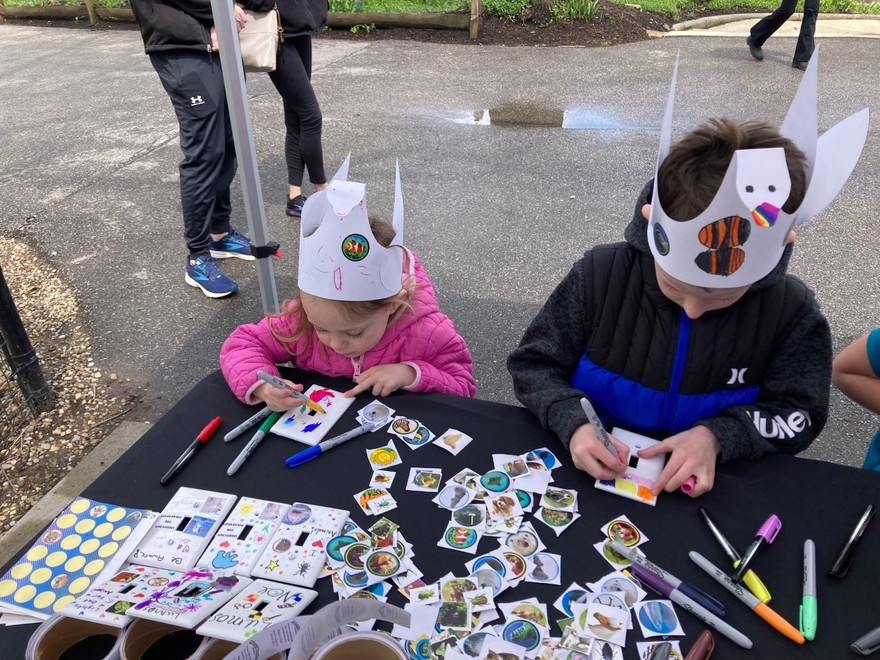
Children creating swan crafts at the Zoo on Earth Day.
How can you help swans?
Kids
- Learn about trumpeter swans through books or other media and share what you learn!
- Visit swans at a zoo, nature center or observe them in the wild if possible. Keep a journal of what you see and hear.
- Do not litter or feed waterfowl bread, both can make them very sick.
- Reduce, reuse, and recycle your trash.
- With an adult, report marked or tagged swans to the proper authorities.
- Report injured swans to your local wildlife agency or wildlife rehab center.
Adults
- Participate in citizen science! Report trumpeter swan sightings to the proper authorities, for example ebird or The Trumpeter Swan Society.
- Get involved in local community projects like pulling invasive plant species or cleaning up litter from wetland areas along with helping restore wetland areas.
- Plant trees, shrubs and flowers that are native to where you live.
- Support legislation that protects swans and their habitat.
- Donate to organizations that protect swans and their habitat.
- Buy non-lead fishing tackle and ammunition. Swans can ingest lead left behind from these activities and it is often fatal.
- Reduce, reuse, and recycle your trash.
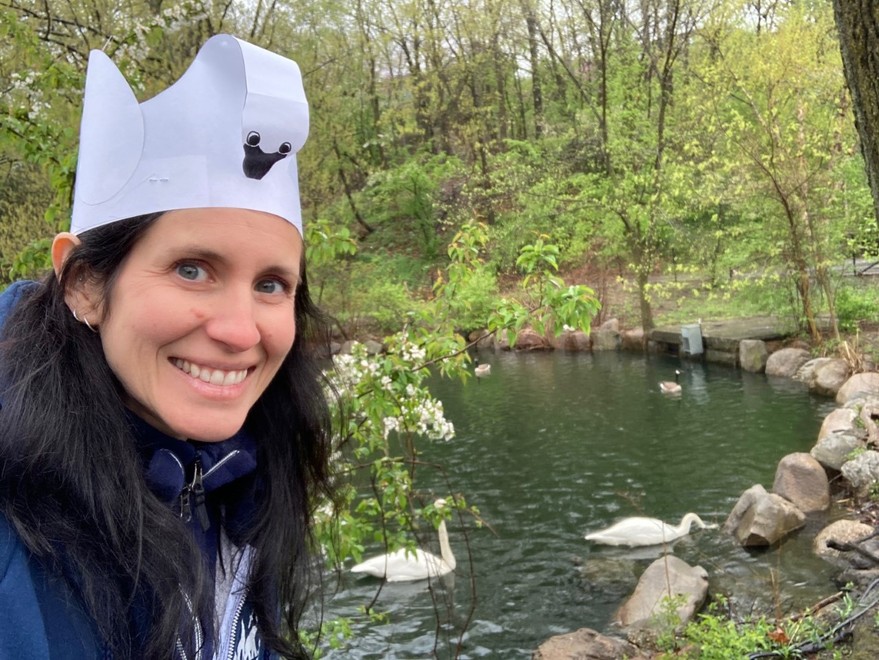
Animal Keeper and SSP Coordinator Tiffany Mayo (with trumpeter swans in the background)


